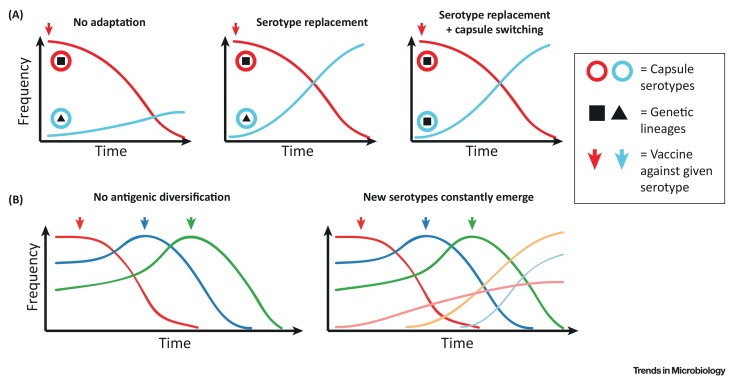Figure I.
Mechanisms of Bacterial Adaptation against Polysaccharide Conjugate Vaccines. (A) Impact of polysaccharide conjugate vaccines on bacterial population structure. On the left, introduction of the vaccine against the red serotype is followed by the decline of this serotype but no replacement by another strain with the blue serotype, and thus overall reduction in carriage rates. This is similar to the situation in Haemophilus influenzae [121]. In the middle, vaccination against the red serotype is followed by the rise of another lineage (triangle) with the blue serotype with no significant reduction in carriage, known as ‘serotype replacement’. On the right, vaccination against the red serotype is followed the rise of the same lineage (square) with another serotype (blue). This is a result of an acquisition of the blue serotype by the square lineage (known as ‘serotype switching’), which had occurred prior to the introduction of the vaccine. The latter two situations are frequently observed in Streptococcus pneumoniae. (B) Potential impact of antigenic diversification on multivalent vaccine strategies. On the left, it is assumed that serotypes do not diversify over time. In this theoretical scenario, broader, multivalent vaccines could eventually lead to the eradication of the bacterial disease. On the right, new serotypes constantly emerge at low frequencies and are selected for by the vaccine due to serotype replacement. This scenario represents a Red Queen race between the vaccines and bacteria. In such a case, broader vaccines could select for novel, previously unseen serotypes to rise in frequency.

